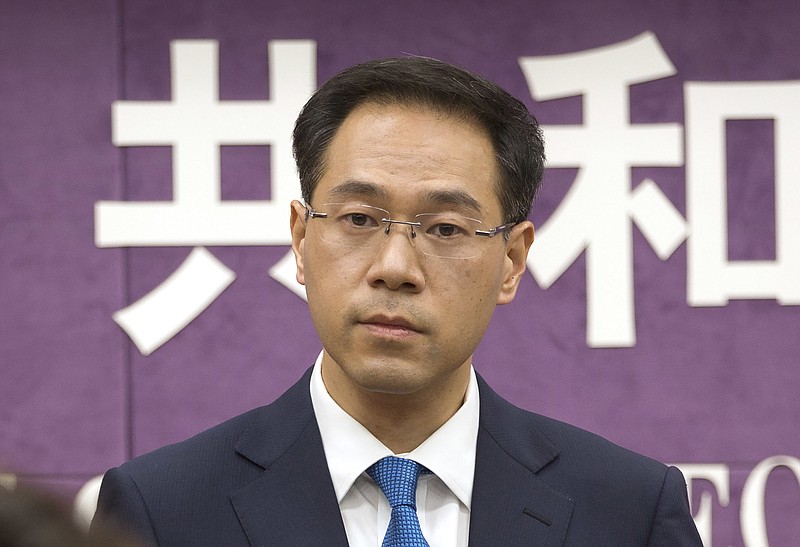BEIJING (AP) — The prospects for a preliminary breakthrough in the U.S.-China trade war improved Thursday after the two sides agreed to reduce some punitive tariffs on each other’s goods, though the full extent of the rollback wasn’t clear.
A Chinese spokesman announced the development Thursday as talks on ending the trade war progressed, and it triggered a rally in U.S. stock markets.
A U.S. private sector analyst with knowledge of the talks said there are still deliberations in the White House about how far to roll back the duties and what steps China must take before the reductions would occur. The analyst spoke on condition of anonymity because he wasn’t authorized to discuss the talks publicly.
The ongoing talks are aimed at working out details of a “Phase 1” deal that was announced Oct. 12. Financial markets had been rattled by reports China was pushing for tariffs to be lifted, which posed the prospect of a breakdown in talks.
Negotiators agreed to a “phased cancellation” of tariff hikes if talks progress, said a Chinese Commerce Ministry spokesman, Gao Feng, early Thursday.
“If the two sides achieve a ‘Phase 1’ agreement, then based on the content of that agreement, tariffs already increased should be canceled at the same time and by the same rate,” Gao said at a news briefing.
As for the size of reductions, Gao said that would depend on the agreement.
“We can be cautiously optimistic here,” said Mary Lovely, a trade economist at the Peterson Institute for International Economics in Washington. “The signals that are coming out are moving in the right direction for a deal.”
The two sides are aiming to finalize the agreement by the end of next week, the private sector official said. President Donald Trump and China’s President Xi Jinping would still need to agree on where and when they would formally sign the pact.
As part of the agreement, the Trump administration would withdraw threatened tariffs that it planned to impose Dec. 15 on about $160 billion in Chinese imports, the source said. Those duties would cover smartphones, laptops and other consumer goods.
Still unresolved is whether and how much to reverse the tariffs that were imposed Sept. 1 on $112 billion of Chinese imports, the private sector analyst said.

